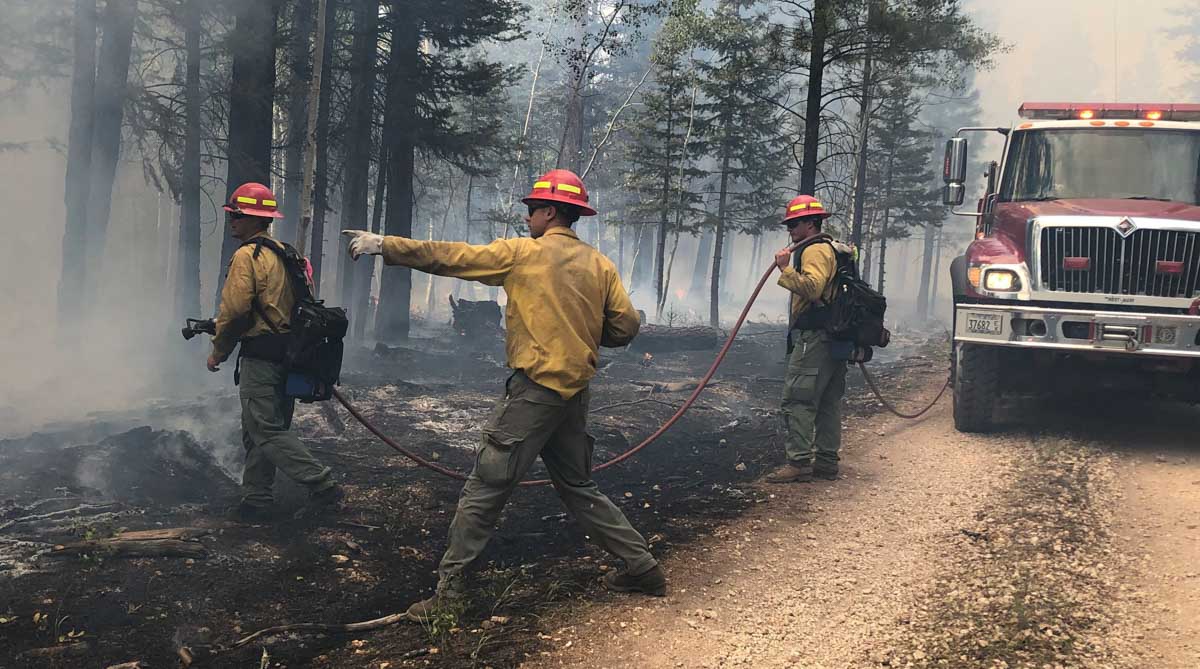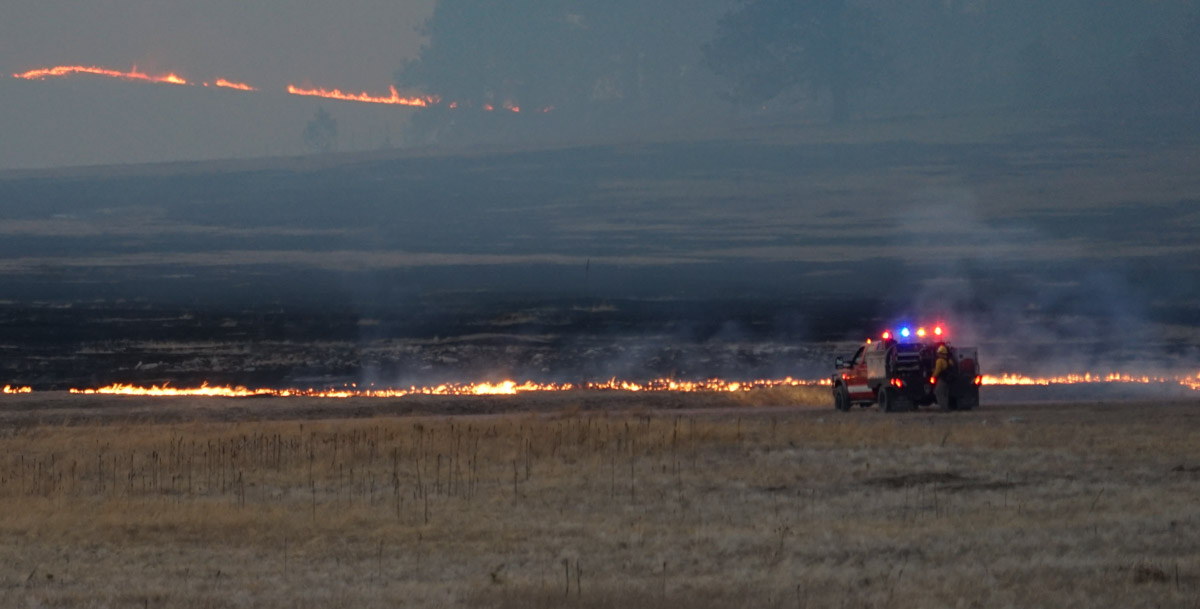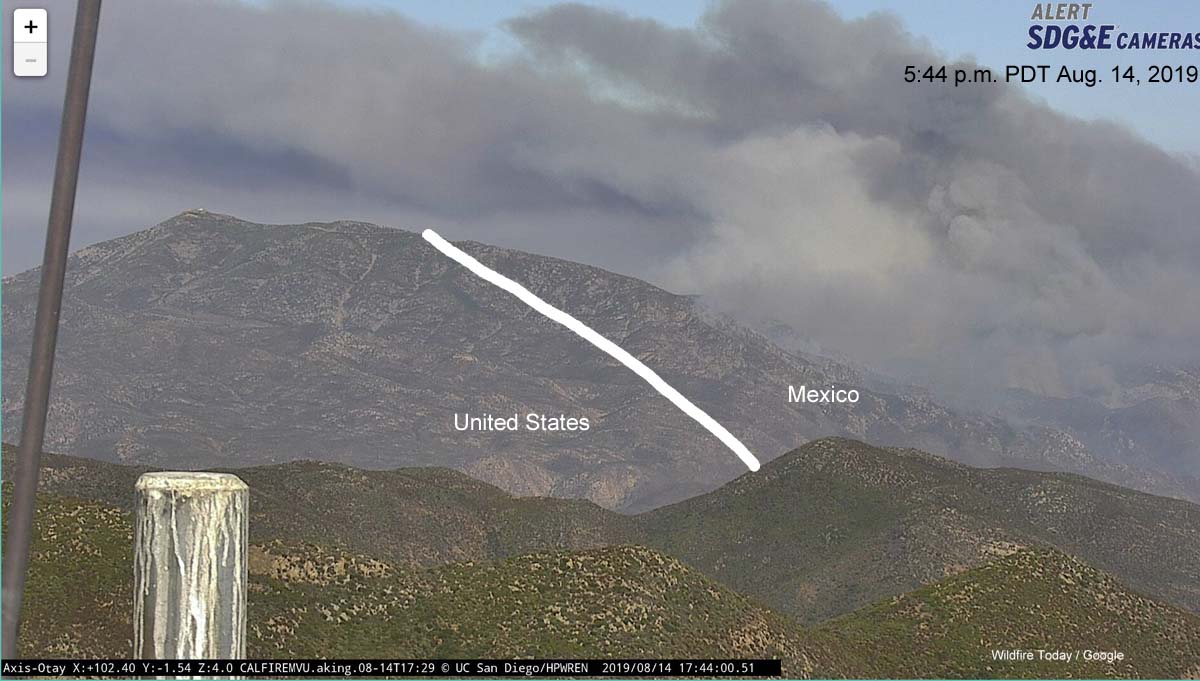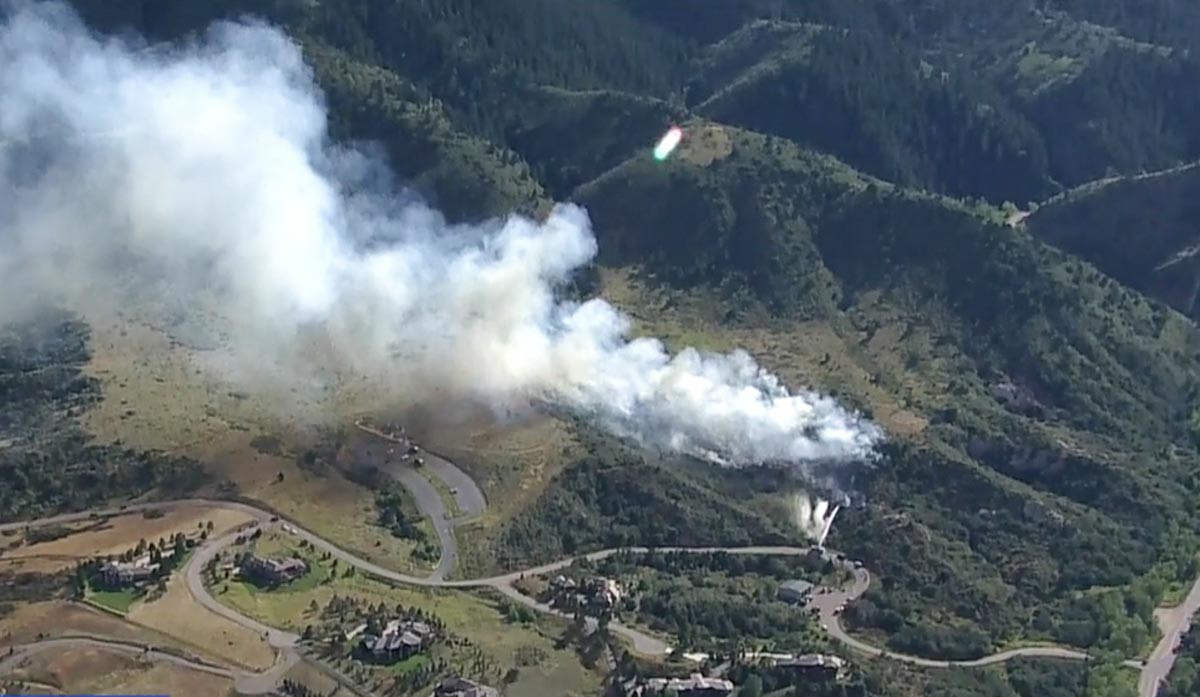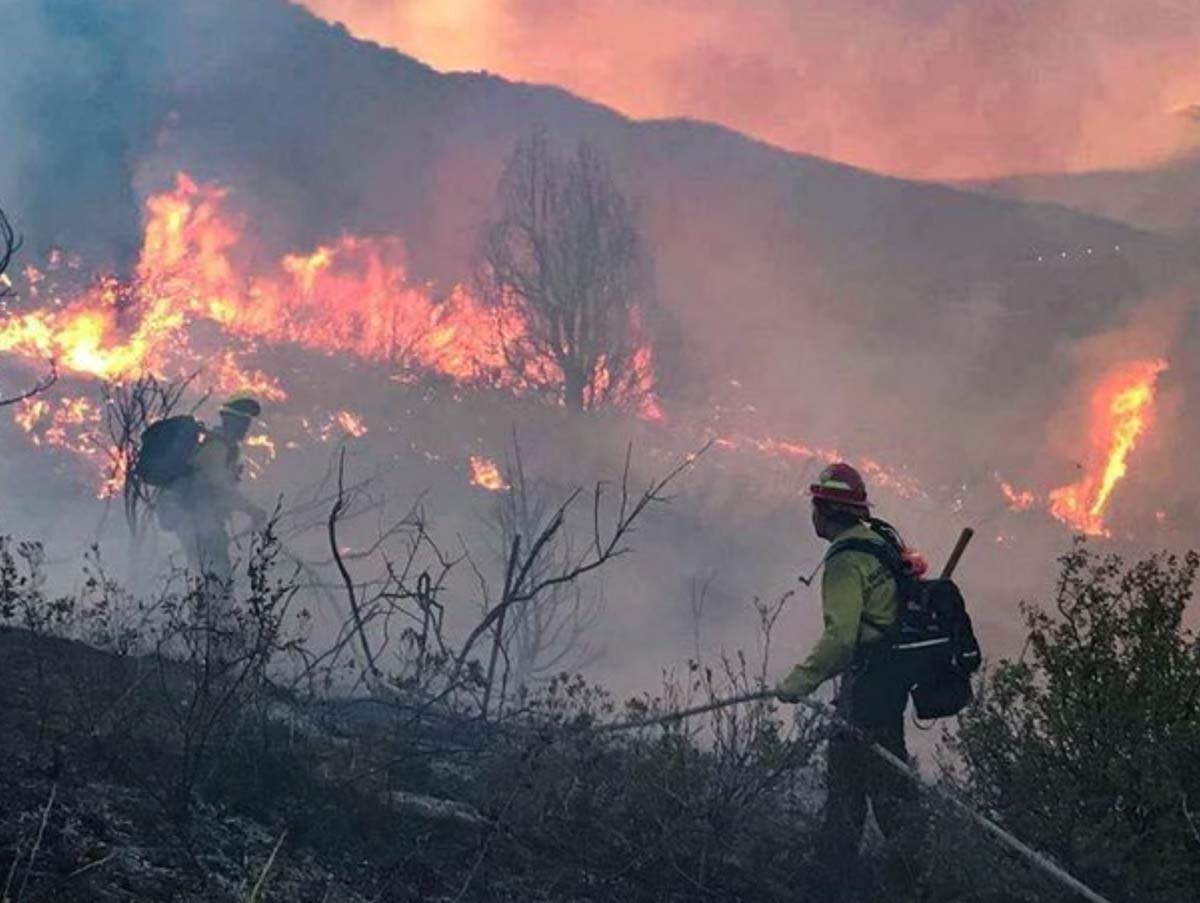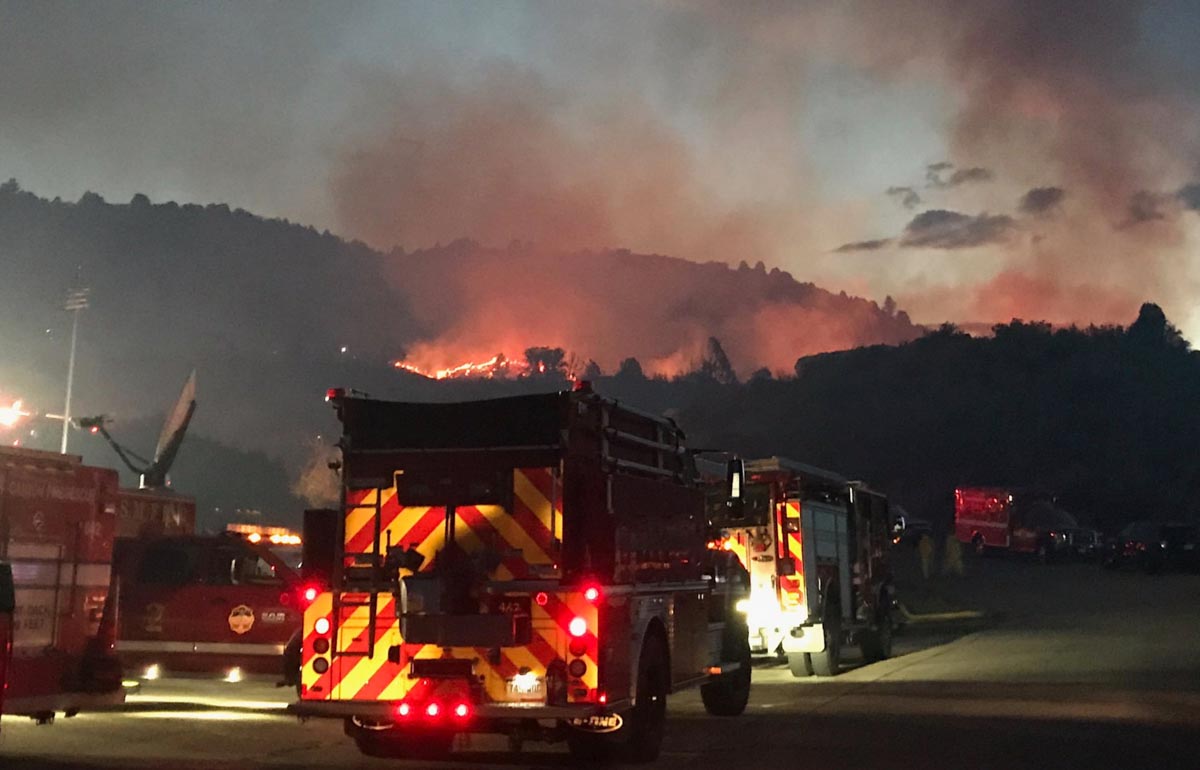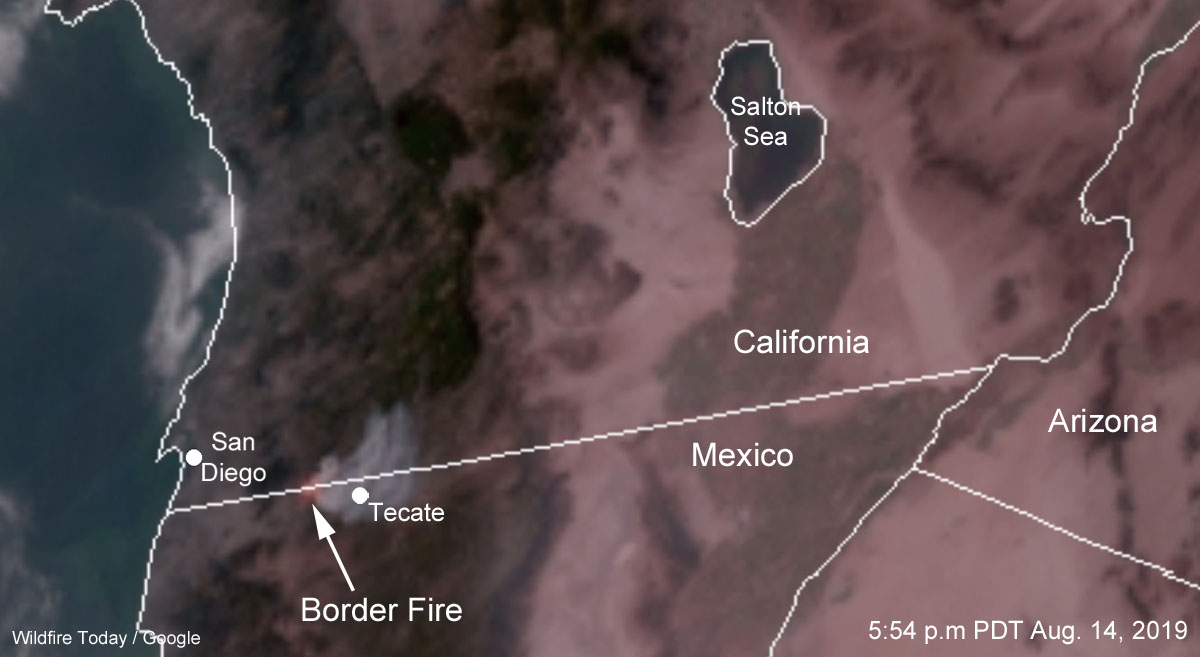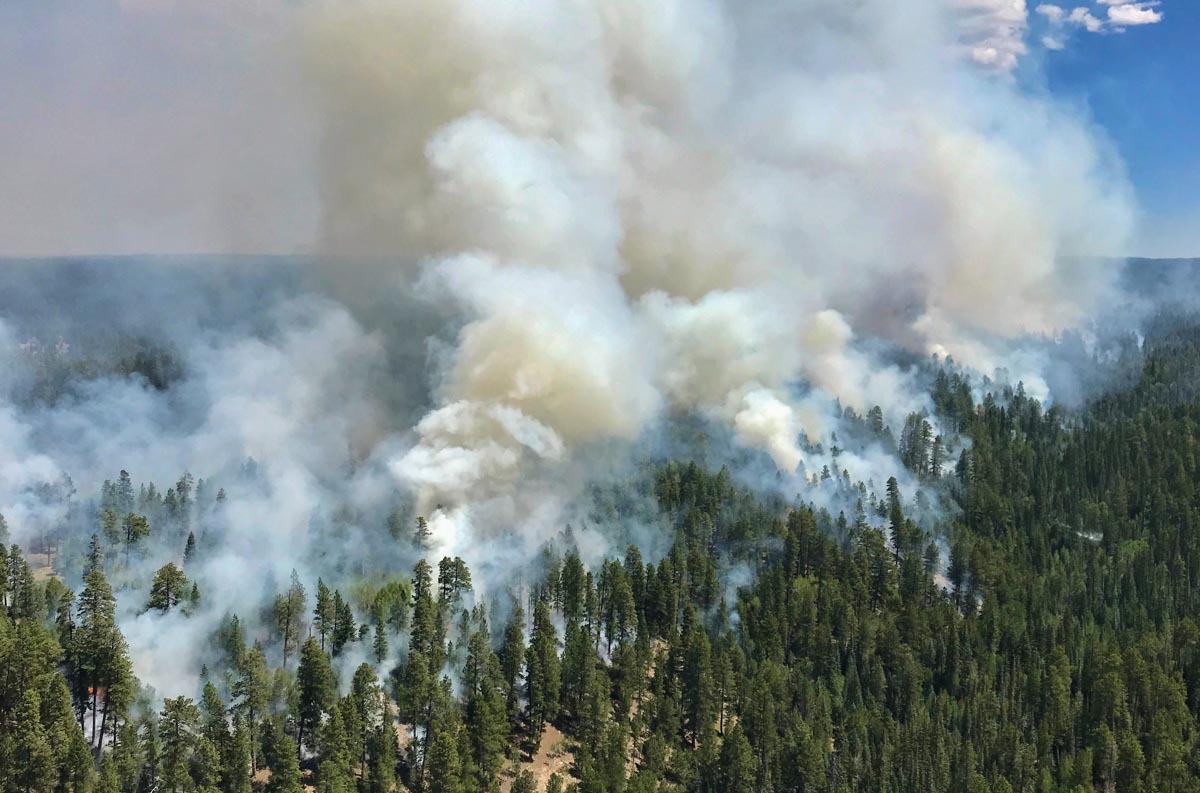
Two wildland fires on lands managed by federal agencies north of the Grand Canyon have burned a total of almost 23,000 acres. Both fires, burning at about 8,000 feet above sea level, are being allowed to spread within predetermined boundaries in order to benefit the natural resources. (see map below)
The largest blaze, the Castle Fire on the Kaibab National Forest, has burned through 96 percent of the 19,368-acre planning area, consuming a significant amount of dead and down trees and some mixed conifer species. As expected with strong gusty winds on Friday, it became more active moving into pockets of unburned piñon-juniper and mixed conifer. The fire slowed once reaching confinement lines. A total of 32 personnel are assigned, which includes 4 fire engine crews. The estimated cost to date is $4.6 million.
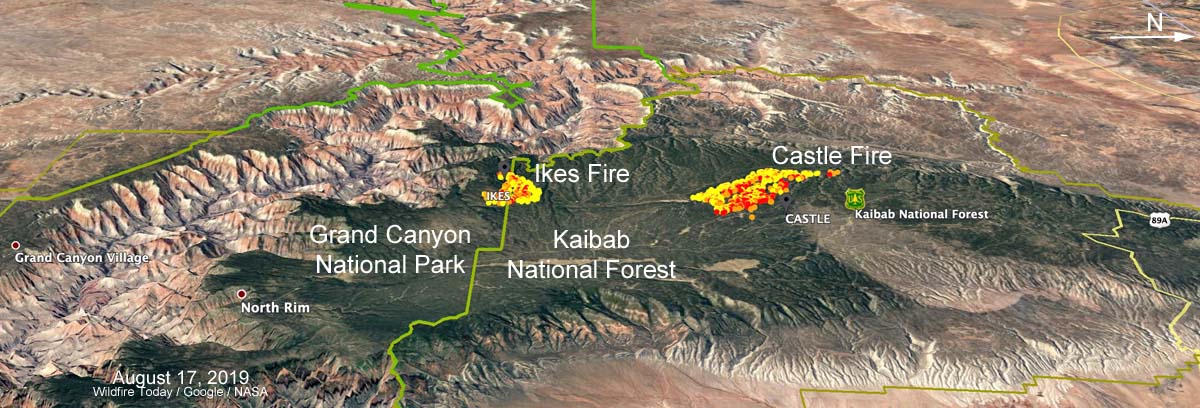
The 3,500-acre Ikes Fire is burning in Grand Canyon National Park and the Kaibab National Forest. It has spread across 42 percent of the 7,785-acre planning area, with low to moderate fire behavior being observed. Firefighting resources assigned include 1 hand crew, 7 fire engines, and 1 helicopter for a total of 88 personnel. On Friday gusty winds prevented firefighters from carrying out firing operations. Crews patrolled the perimeter on the northeast and eastern portions of the fire while other personnel continued to prep the west side of Forest Service Road 223. Observed fire behavior was active, with backing fire along ridge tops and single tree torching. The estimated cost to date is $1 million.
The predicted weather for the weekend is warm, very dry conditions with temperatures about 5 degrees above average. Gusty west to southwest breezes are predicted for Saturday afternoon with light drainage winds overnight.
